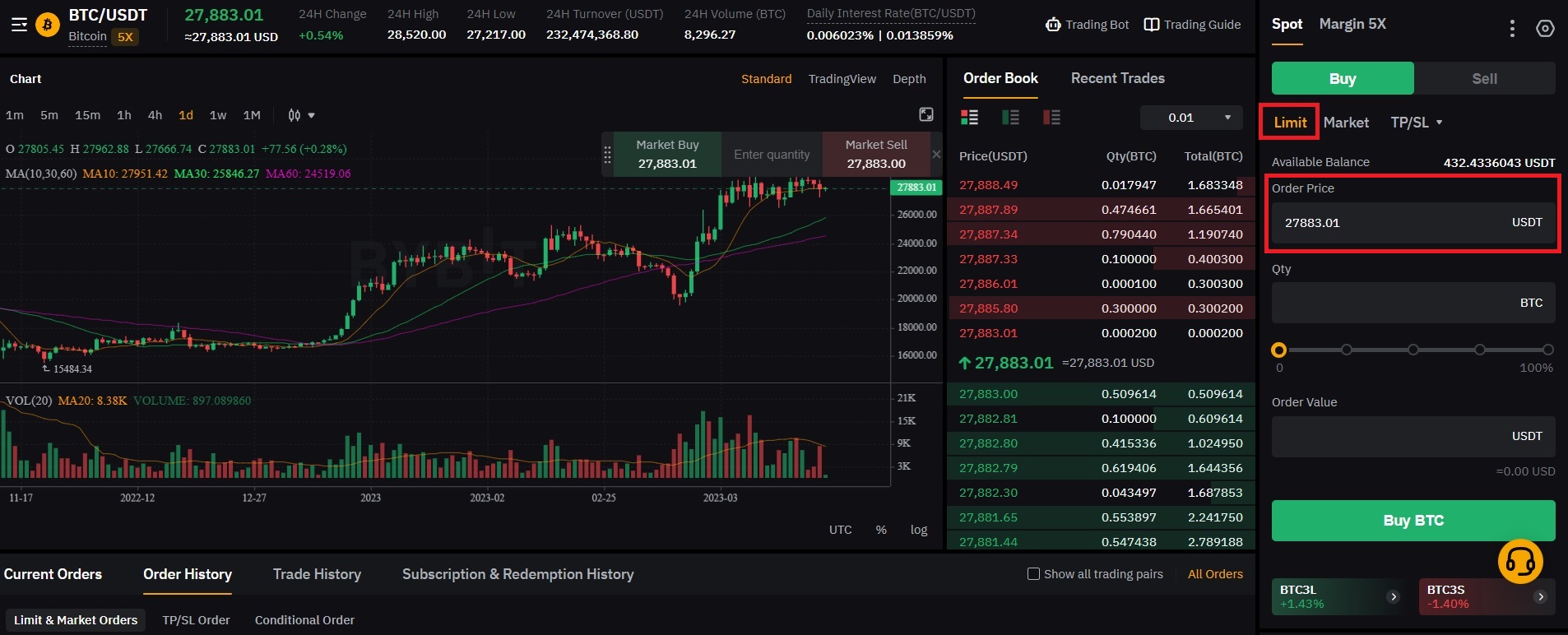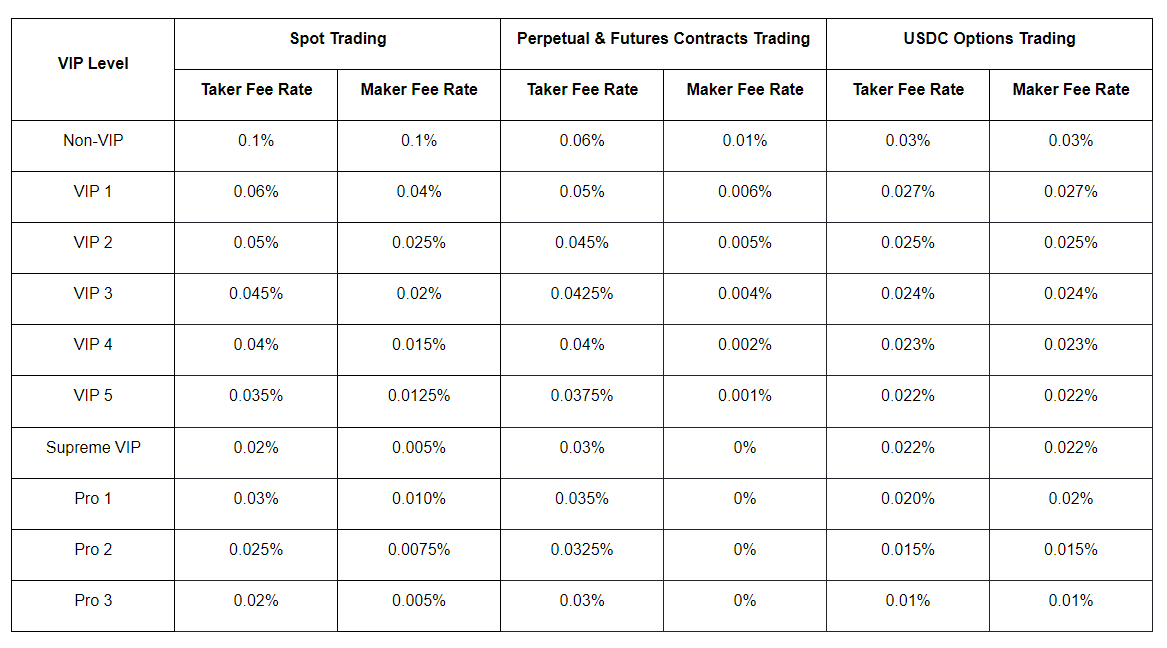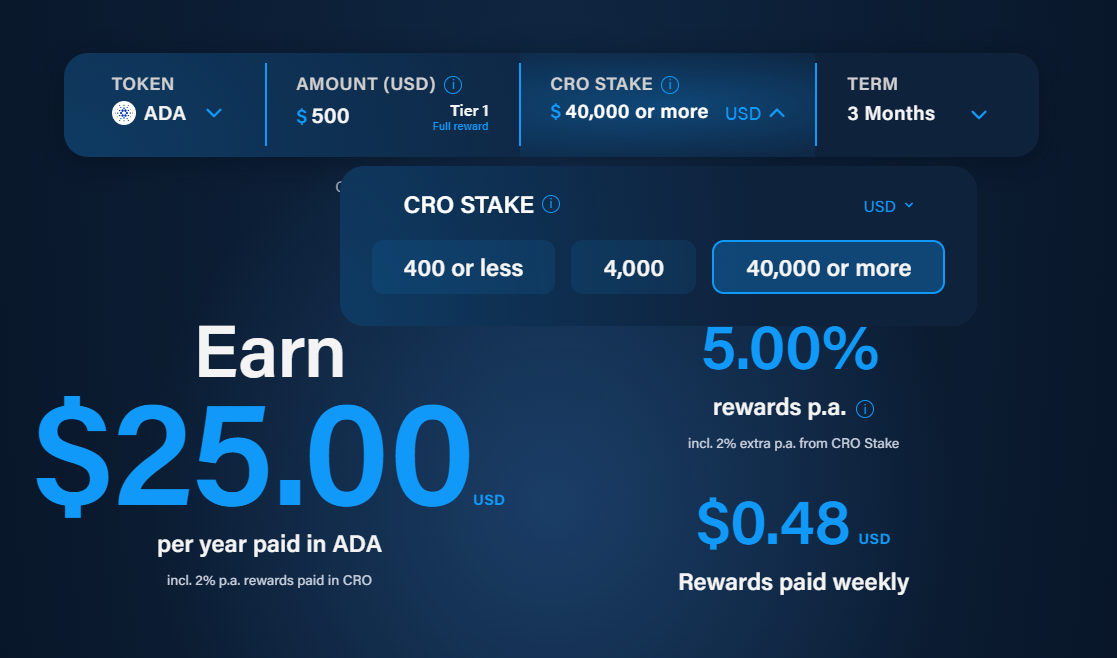This Is How To Reduce Your Crypto Trading Fees
It is in the best interests of all investors – big or small – to ensure they’re paying as little crypto trading fees as possible. Here are the best ways to reduce your trading costs.
TABLE OF CONTENTS
Crypto trading fees may seem like a minor cost, but they can add up quickly. Several strategies are available to minimize crypto fees and lead to a healthier cryptocurrency portfolio. Here's a quick list of the best ways to reduce crypto trading fees:
- Use a cryptocurrency exchange with zero-trading fees
- Find a crypto exchange with lower fees
- Use limit orders instead of market orders
- Trade with higher volumes
- Hold and stake the exchange’s native token
- Avoid low-volume trading exchanges
- Trade pairs with high liquidity
- Check fiat withdrawal fees when cashing out
- Consider a decentralized exchange
Proven Ways To Reduce Trading Fees In Crypto
1. Use zero trading fee exchanges
The best way to reduce crypto trading fees is to not pay any at all. Several crypto exchanges offer zero trading fees. This is an easy way to reduce trading fees. Investors only need to sign up for the platform like they would any other crypto exchange and get started trading.
Most of these platforms restrict which assets can be traded without fees, so always double-check the offer before depositing money. Some promotions are temporary and rely on a referral link, while others are permanent and only apply to specific trading pairs.
For example, Binance users can trade BTC (Bitcoin) against TUSD (TrueUSD) without any maker or taker fees – however, this is only eligible on spot markets. Binance instant convert markets will still incur the standard trading fee.

Reducing trading fees to zero can save investors quite a bit of cash. Let’s say someone wanted to buy $1,000 of BTC with a fee rate of 1% – that would ultimately result in savings of $10. At face value, this isn’t a huge amount. But someone who employs a dollar-cost average strategy that makes this trade every month would save $120+ every year. When we consider that high-volume traders easily clear $1 million in trades every month, it’s easy to see how savings can add up.
2. Find a crypto exchange with lower fees
Each crypto platform will have a different fee schedule that depends on various factors. Some will charge higher trading fees because they need the extra money to operate due to a lower customer base. For example, crypto exchanges in smaller markets like Australia or parts of Europe will naturally have higher fee rates than massive platforms such as Binance.
Following this example, some exchanges charge a flat 1% fee on all trades. A $3,000 order for ETH would set customers back $30 in fees. Compare this to a cheaper exchange like Binance, which has a spot trading fee of just 0.1%. The same trade would cost only $3 in fees—a 10% difference (or saving in fees).
This is a massive difference over a long period, especially for active traders. That’s why it’s pivotal for new investors to read multiple exchange reviews before signing up for a platform. For more information, read our guide on the best crypto exchanges with the lowest fees to help find the most cost-efficient platform available. Here's a quick comparison of the default trading fees of the top exchanges at the time of writing.
| Crypto Exchange | Trading Fees (maker / taker) |
|---|---|
| Binance | 0.1% / 0.1% |
| Coinbase | 0.4% / 0.6% |
| Kraken | 0.16% / 0.26% |
| KuCoin | 0.1% / 0.1% |
| ByBit | 0.1% / 0.1% |
3. Trade with limit orders instead of market orders
Most newcomers to the crypto scene will likely purchase crypto via a market order. Every “instant buy” service in the industry will involve placing a market order. While this is the most convenient investment method, it’s also one of the more expensive methods to buy crypto.
Buying at “market prices” is much like buying anything at a store. Investors will part with a certain amount of money and receive the equivalent in Bitcoin (or another crypto) at whatever its current price is, according to that exchange. Market orders do not get to set a desired buy price.
Alternatively, placing a limit order involves setting a price that suits a trading strategy. When the crypto’s value hits that price, the order will automatically execute. These orders are also known as “trigger orders”. They can be especially effective in the crypto market which can see daily fluctuations of 5+%.

For example, someone might set a market order for 0.5 BTC when the coin is priced at $28,000, costing the investor $14,000. On the other hand, someone might set a limit order for 0.5BTC at $27,500. While the second investor might have to wait a while for BTC to drop, they would end up only spending $13,750 – savings of $250. Of course, the risk here is that BTC never drops to $27,500 and the investor misses out on Bitcoin’s price rising. Pairing limit orders with technical analysis to predict when BTC (or other crypto assets) will make a dip in price is a good way to mitigate this risk.
Lastly, most exchanges use a maker-and-taker fee model. Quite often, the trading fees for using a limit order will be cheaper than a market order. The reason behind this is due to providing liquidity to the order book which attracts bigger traders to the platform.
4. Trade with higher volumes
Not everybody can trade with higher volumes – but for those that can, several incentives can make it worthwhile. Firstly, many exchanges offer trading fee discounts for traders who spend a certain amount of monthly income on that platform. It’s worth noting that high volume typically means seriously high volume – $50k+ for most exchanges. For example, ByBit’s VIP 1 tier requires investors to spend over $1m every month on spot trading to be eligible for a ~50% trading fee discount.
However, let’s say a trader spent $1m in a month as a maker at ByBIt’s Non-VIP level. With fees of 0.1% per trade, this would cost $1000 in monthly trading fees. However, a VIP 1 with fees of 0.04% would only incur a fee of $400, saving them $600. In addition, trading with high-volume lump sums will be more cost-effective on platforms that charge flat trading fees, rather than percentage-based fees.

5. Hold and stake the exchange’s native token
Since the altcoin explosion in 2017, several exchanges have offered incentives for holding and staking their native token. Staking the token will earn investors passive income, reduce trading fees, and unlock a myriad of other benefits.
Let’s use the popular crypto trading platform Crypto.com as an example. Their native token, Cronos (CRO), can easily be locked up on-chain to reduce trading fees. Level 1 spot trading fees are 0.075%, but users who lock up more than 1,000 CRO will receive a 3% discount. Users who stake over 10 million CRO can receive a rebate for trading, around 0.0010%.

6. Avoid low-volume trading exchanges
To understand why avoiding low-volume trading exchanges is important, we must first understand spreads. A spread is a difference in price between the buying price of a crypto asset and its selling price. Commonly known as the bid-ask spread, this means the value of a cryptocurrency is higher when buying than it is when selling. Such spreads are amplified on platforms with low volume, as there are fewer pending orders from traders.
For example, at the time of writing this article, an exchange such as Swyftx has a buy price for Bitcoin is AUD 41,176.32, while its sell price is AUD 40,785.72. This is a spread of 0.95%, quite reasonable for a smaller, national exchange. However, it is not uncommon to find local exchanges charging spreads of 3+%, which, when tacked onto a trading fee, can amount to 5% in fees for every single trade.
Sticking to major, international exchanges like Binance, Coinbase, and ByBit will allow investors to cash in on spreads of under 1%. A 4% difference on a $10,000 trade results in savings of $40.
7. Trade pairs with high liquidity
Trading pairs with low liquidity and few market orders are subject to high bid-ask spreads. This is because there aren’t enough traders setting the price at a desirable level. Perhaps an even more damaging issue with trading low-liquidity crypto pairs is known as slippage.
For example, someone might place an order for an obscure altcoin priced at $0.35, but by the time the order is processed, they might have purchased it for $0.37. Someone spending $100 might have expected to receive 286 coins but, instead, they only get 270. If the crypto were to triple in value and reach $1, that would result in a massive 16% difference in profits. Combine this with higher spreads, and low-liquidity trading pairs can harm profits.
The best bet is for novice traders to stick with high-volume pairs within the top 100 by market cap. This is especially important because experienced traders with lots of capital can easily manipulate the price of obscure trading pairs to benefit their strategies. Slippage can also be avoided entirely by placing a limit order instead of a market-style execution.
8. Check fiat withdrawal and blockchain fees when cashing out
Investors should always look for an exchange that supports free or cheap fiat withdrawals. Many modern exchanges have reduced withdrawal fees on major fiat currencies (USD, AUD, GBP, SGD, etc.) to zero to keep up with the rest of the competition.
This is especially important for fiat as withdrawal fees are typically a flat rate, rather than a percentage-based fee. Therefore, a withdrawal fee of $30 for someone who wants to cash out $250 in USD would be a massive hit to their profits. Ideally, investors should target platforms like Coinbase, ByBit, Binance, Robinhood, or a local exchange with minimal withdrawal fees on bank transfers when cashing out of Bitcoin or other cryptos.
Similarly, most platforms will not charge fees on crypto withdrawals – instead charging a standard network or blockchain fee. However, many exchanges have set this “standard” fee as a flat rate, when in reality, it is constantly changing. It’s a good idea to compare the current network fee by checking a block explorer (like Etherscan) and compare it to the exchange’s crypto withdrawal fee to see if it is cost-effective. For example, the cost to send USDT can vary from 3.20 USDT to 25 USDT via the ERC-20 network on exchanges. There are even blockchain network costs to transact Bitcoin which is around USD 3.76 at the time of writing.
9. Consider a decentralized exchange
Generally, most investors consider decentralized exchanges (DEXs) to be somewhat unsuitable for beginners. This is because they have a steeper learning curve, have minimal customer support, and typically don’t support fiat deposits/withdrawals. There are no protections in place in case of hack or misuse of crypto funds. However, if investors make sure to take care of their transactions, DEXs are nearly always more cost-effective than centralized alternatives. For example, the popular crypto DEX PancakeSwap charges anywhere from 0.01% to 0.25% fees depending on the trading pair – and this is an above-average rate for a decentralized exchange.
Using a DEX will require a non-custodial wallet such as MetaMask or Trust Wallet that has been funded with digital currencies. The wallet can then be connected to the decentralized platform for investors to begin trading, yield farming, or staking.
The Reason For Trading Fees In Crypto
Crypto trading fees are an integral part of the industry – without them, there would be no exchanges or brokerages offering an investment opportunity. Trading fees are central to how a crypto exchange makes money and their biggest income source as compensation for the platform matching up buyers and sellers.
Decentralized exchanges charge fees too, although for a different purpose. As no one entity in control needs to profit, these fees are distributed among certain token holders that contribute to the exchange’s economic security and operation. Without this incentive, most DEXs would likely be inoperable.
Main Types of Crypto Trading Fees You Will Incur
Those who trade using the spot markets will also encounter two different types of fees: maker and taker. Maker fees are often lower than a taker, as they expand the liquidity of an exchange’s order book. Maker fees occur when investors place a limit order that isn’t filled immediately, whereas market orders will usually incur taker fees as they reduce the market’s liquidity. Investors also need to keep an eye out for deposit and withdrawal fees, as well as cryptocurrency network fees.
Frequently Asked Questions
How to avoid high crypto trading fees?
There are several ways investors can avoid high crypto trading fees. Choosing a low (or zero) fee exchange, staking a platform’s native token, trading with high volume, or avoiding platforms and trading pairs with low liquidity can all significantly lower fees.
Why are crypto trading fees so high?
Crypto trading fees can seem a little high as businesses providing digital currency services are taking on a bit more risk due to the industry’s unregulated and volatile nature. However, crypto trading fees aren’t actually that high and are often comparable to traditional stock market brokerage fees.
What are the average trading fees for crypto?
The average crypto trading fee sits between 0 and 1.5%. Major international exchanges will typically offer a fee rate of below 1%, while local exchanges will hover around 1%.